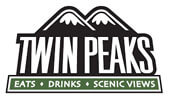The Age of Experience: How Older Workers Bring Value to a Changing Labor Market

The Age of Experience: How Older Workers Bring Value to a Changing Labor Market
In recent years, a significant trend has emerged in the American workforce: the increasing number of older Americans who are choosing — or needing — to continue working well past the traditional retirement age. This shift presents challenges and opportunities for employers and recruiters. Understanding and adapting to this trend is crucial for leveraging the skills and experience of older workers, ensuring a robust and dynamic workforce.
Understanding the trend:
While the overall workforce may be shrinking, the percentage of older adults remaining active in their careers is on the rise. In 2023, 19% of Americans aged 65 and older were employed, nearly double the rate from 35 years ago. Moreover, individuals aged 75 and up are the fastest-growing segment of the workforce today. Several factors contribute to this trend:
- Improved healthcare: Advances in medical care are enabling older adults to maintain their health and vitality longer, allowing them to stay active in the workforce.
- Financial necessity: Inflation and insufficient retirement savings are compelling many to continue working to secure their financial futures. A recent Voya Financial survey found that 92% of respondents needed or wanted more money for retirement, with 13% citing this as the primary reason for their continued employment.
- Changing attitudes toward retirement: Cultural shifts in attitudes toward retirement are also playing a role. Many older adults are redefining what retirement looks like, opting to remain engaged in meaningful work rather than withdrawing from the workforce entirely.
A global study from Bain & Company predicted that, by 2030, 150 million jobs in the G7 countries (Canada, France, Germany, Italy, Japan, the United Kingdom, and the United States) will shift to workers over the age of 55. By 2031, this age group is expected to comprise more than a quarter of the workforce.
Embracing the value of older workers
Employers are recognizing the invaluable contributions that older employees can make. These individuals bring a wealth of industry expertise, skills, and life experience that can enhance the organizational performance and culture. Addressing and adjusting to their unique needs and expectations is essential to make the most of the value they bring.
Some of the advantages that older workers bring to the table are:
- Experience and knowledge: Older employees often possess a deep understanding of their industry and can provide insights and perspectives that younger workers may lack.
- Reliability and work ethic: Many older workers have developed strong work ethics and reliability over their careers, traits that are invaluable in any organization.
- Mentorship and leadership: Older workers can serve as mentors and leaders, helping to guide and develop younger employees.
- Stability: Older workers often bring stability to a team, which can reduce turnover rates and associated costs.
- Technological fluency: Contrary to common stereotypes, many older workers are fluent in technology. According to the Harvard Business Review, “the pandemic provoked a spike in digital skills acquisition among older adults who, like all of us, were forced into a Zoom world.”
Dealing with ageism in the workplace
Despite the valuable contributions of older workers, ageism remains a significant barrier in many workplaces. To create an inclusive and fair environment, hiring teams and company leaders can take these proactive steps to prevent age discrimination and foster a culture that values employees of all ages:
- Avoid implicit bias in hiring: Implementing blind recruitment processes where the candidates’ ages are not disclosed can help reduce unconscious bias and ensure that hiring decisions are based on qualifications and experience, rather than age. Diverse hiring panels (that include members of various age groups) can also help provide a broader perspective and mitigate age-related biases during the selection process.
- Design job descriptions with age-neutral language: Avoid phrases that may unintentionally discourage older applicants, such as “digital native” or “energetic.” Instead, focus on the specific skills and experiences required for the role. Ensure that the job descriptions emphasize qualifications and competencies without implying a preference for younger candidates.
- Revamp policies to address age-related biases: Company policies should be updated to explicitly prohibit age discrimination and outline the procedures for reporting and addressing such incidents. The criteria for promotions and advancements need to be transparent to ensure that opportunities are based on merit and performance.
- Train workers on diversity and discrimination: Regular training sessions on diversity, inclusion, and the importance of combating ageism will educate employees on the value of age diversity and teach them how to recognize (and address) age-related biases.
Practical strategies for employers
Age diversity in the workplace is crucial for employers looking to build and manage a successful team. Organizations benefit from a variety of perspectives, skills, and experiences that come from having team members of different ages. This generational diversity also helps foster a respectful and inclusive environment where everyone feels valued.
To support older job candidates and create mutually beneficial employment arrangements, employers and recruiters can implement several practical strategies:
- Flexible work arrangements: Offer flexible schedules and remote work opportunities to make roles more attractive to older workers who often prefer a less rigid environment. Flexible work arrangements can help older employees balance work with other responsibilities, such as caregiving or other obligations.
- Open discussions and inclusivity: Engage in open conversations with employees about their needs and expectations. Inclusivity isn’t just about diversity in age; it’s about creating an environment where all employees feel valued and supported. By fostering an inclusive culture, employers can ensure that older workers feel respected and appreciated.
- Professional development: Invest in ongoing training and development opportunities tailored to older employees. This will not only help them stay current with industry trends but will also demonstrate a commitment to their growth and contribution. Professional development can include skill-building workshops, mentorship programs, and access to online learning platforms.
- Comprehensive benefits: Ensure that benefits packages address the specific needs of older workers, including health care, wellness programs, and support for retirement planning. Providing access to robust health care options and financial planning resources can help older employees manage their health and prepare for retirement.
- Culture and community: Foster a workplace culture that values experience and wisdom. Celebrate the achievements of older employees and create opportunities for them to mentor younger staff, fostering a collaborative and respectful work environment. Recognizing and honoring the contributions of older workers can enhance morale and promote a positive organizational culture.
The role of recruiters
Recruiters play a crucial role in this evolving landscape. They can help older candidates position themselves as valuable team members by emphasizing their industry knowledge, skills, and unique perspectives, turning potential age-related hurdles into assets. It’s about shifting the narrative to one of empowerment and capability.
Here are some strategies recruiters can use to support older job candidates:
- Highlighting experience: Emphasize the extensive experience and knowledge older candidates bring to the table. This can be particularly important in industries where expertise and seasoned judgment are highly valued.
- Skills assessment: Conduct thorough skills assessments to identify the strengths and capabilities of older candidates. This can help match them with roles that align with their expertise.
- Resume optimization: Assist older candidates in optimizing their resumes to highlight relevant skills and accomplishments, focusing on relevant experience from the last 5-7 years. Candidates may also want to consider deemphasizing info on their resume that calls attention to their age, such as setting a 15-year limit on their work history or omitting the year they graduated from college.
- Interview coaching: Provide interview coaching to help older candidates present themselves confidently and effectively, addressing any potential concerns about their age and emphasizing their value to prospective employers.
Adapting to the future workforce
As the workforce continues to age, it’s clear that older workers will remain a vital part of our economic fabric. By adopting flexible and inclusive practices, employers can attract and retain this experienced demographic, enriching their organizational culture and performance.
It’s also important to be mindful of the broader economic and demographic trends driving this shift. For example, the growing number of older workers is likely to continue influencing labor market dynamics, affecting everything from job availability to wage structures.
Embracing the strengths of older workers isn’t just a necessity — it’s an opportunity to build stronger, more dynamic teams for the future. Recognizing and valuing the contributions of older employees creates a more inclusive and resilient workforce.
As we move forward, it’s crucial to stay attuned to the needs and preferences of older workers. This includes being proactive in offering flexible work arrangements, fostering inclusive workplace cultures, and providing opportunities for professional development.
In a rapidly changing labor market, the ability to adapt and embrace diversity in age will be key to long-term success. Older workers bring a wealth of experience, knowledge, and dedication that can significantly benefit organizations willing to support and engage them. By taking these steps, employers and recruiters can ensure that they are not only meeting the demands of today’s workforce but also preparing for the future.
 Brian Miller, joined Patrice & Associates in 2014 as an equity partner and CEO, and has expertise in all aspects of the P&A model – staffing/recruiting & franchising. Brian has 25 years in franchising and 16 years at a leading full-service staffing and recruiting industry franchisor, Snelling Staffing.
Brian Miller, joined Patrice & Associates in 2014 as an equity partner and CEO, and has expertise in all aspects of the P&A model – staffing/recruiting & franchising. Brian has 25 years in franchising and 16 years at a leading full-service staffing and recruiting industry franchisor, Snelling Staffing.








